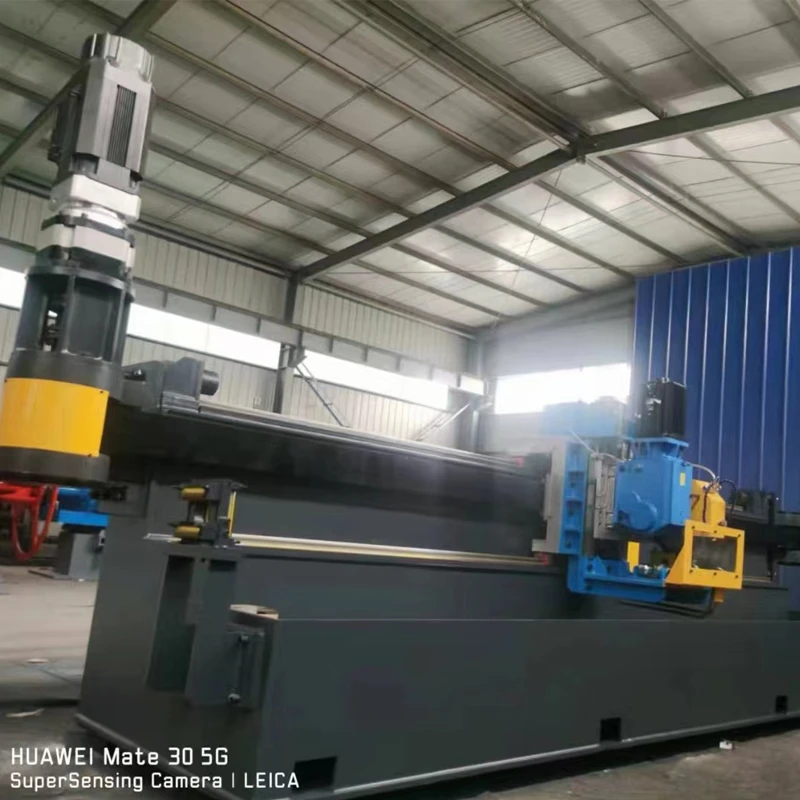Innovative Track Rolling Machine for Efficient Metal Forming Solutions
Understanding Track Roll Forming Machines Innovations and Applications
Track roll forming machines have become indispensable in various industries due to their ability to produce high-quality, precisely shaped metal components. These machines utilize a process called roll forming, which involves the progressive bending of metal sheets into desired shapes as they pass through a series of rollers. This article delves into the workings, benefits, applications, and future innovations in track roll forming machines.
How Track Roll Forming Machines Work
Track roll forming machines operate by feeding a continuous strip of metal, usually steel, aluminum, or other alloys, through a set of rollers that are strategically positioned. The design of these rollers is crucial, as they dictate the final shape of the metal profile. The process begins with the metal strip entering the machine and being sequentially shaped as it moves through multiple stations.
Each station has rollers that gradually bend the metal into the desired shape. The precise alignment and pressure applied by these rollers enable manufacturers to produce parts with tight tolerances and excellent surface finishes. Once the metal has been shaped into the track or profile, it may undergo secondary processes like cutting, welding, or surface treatment, depending on the end product requirements.
Advantages of Track Roll Forming Machines
1. Efficiency Track roll forming machines are known for their high production speeds. They can create substantial lengths of profiles in a relatively short time, making them ideal for mass production.
2. Material Utilization The roll forming process has minimal waste compared to other metal fabrication methods. The continuous strip of metal undergoes deformation without significant loss, leading to better material utilization and cost-effectiveness.
3. Versatility These machines can produce a variety of complex shapes, from basic tracks to intricate profiles. This versatility makes them suitable for many industries, including automotive, construction, and transportation.
4. Consistent Quality Roll forming guarantees uniformity in product dimensions and weight. This consistency is crucial for components that must fit together perfectly, such as in assembly lines.
track roll forming machine

Applications of Track Roll Forming Machines
Track roll forming machines are employed across various sectors
1. Automotive Industry In automotive manufacturing, these machines produce components such as chassis frames, roof rails, and reinforcements, which require high strength yet lightweight properties to enhance fuel efficiency.
2. Construction Roll-formed metal tracks serve as essential components in steel framing systems, roofing systems, and curtain walls. Their structural integrity and design flexibility make them suitable for a variety of architectural applications.
3. Railway and Transportation These machines manufacture rail tracks and other components crucial for railway infrastructure, contributing to the efficiency and safety of public transport systems.
4. Furniture and Home Appliances In the furniture sector, track roll forming machines are used to create brackets, frames, and various fittings. Their capability to produce visually appealing profiles allows furniture manufacturers to enhance product aesthetics.
Future Innovations
The future of track roll forming machines appears promising, with advancements now focusing on increasing automation and integration with digital technologies. Industry 4.0 concepts are being embraced, allowing machines to gather real-time data for predictive maintenance and quality control. Moreover, the introduction of robotics in the roll forming line can further enhance productivity by automating secondary processes and improving safety.
Sustainability is also becoming a significant focus, with efforts to reduce energy consumption and emissions during production. The development of lightweight materials and innovative coating techniques is likely to continue, further broadening the application range for track roll forming machines.
Conclusion
In summary, track roll forming machines play a vital role in modern manufacturing, offering efficiency, precision, and versatility across a myriad of industries. As technology continues to evolve, these machines will adapt and improve, ensuring their relevance and capability in meeting the demands of the future industrial landscape. The continued investment in innovation will foster a sustainable and efficient manufacturing process, enhancing the production of essential metal components.
-
High Frequency Straight Seam Welded Pipe Production Line-BzZhou Xinghua Machinery Equipment Manufacturing Co., LTD.|line pipe steel&welded gas pipeNewsJul.30,2025
-
High Frequency Straight Seam Welded Pipe Production Line-BzZhou Xinghua Machinery Equipment Manufacturing Co., LTD.|High Precision&Automated SolutionsNewsJul.30,2025
-
High Frequency Straight Seam Welded Pipe Production Line - BzZhou Xinghua Machinery Equipment Manufacturing Co., Ltd.NewsJul.30,2025
-
High Frequency Straight Seam Welded Pipe Production Line-BzZhou Xinghua Machinery Equipment Manufacturing Co., LTD.|Precision Welding, High EfficiencyNewsJul.30,2025
-
High Frequency Straight Seam Welded Pipe Production Line|BzZhou Xinghua|Precision Welding&EfficiencyNewsJul.30,2025
-
High Frequency Straight Seam Welded Pipe Production Line - BzZhou Xinghua|Precision Engineering&EfficiencyNewsJul.30,2025


